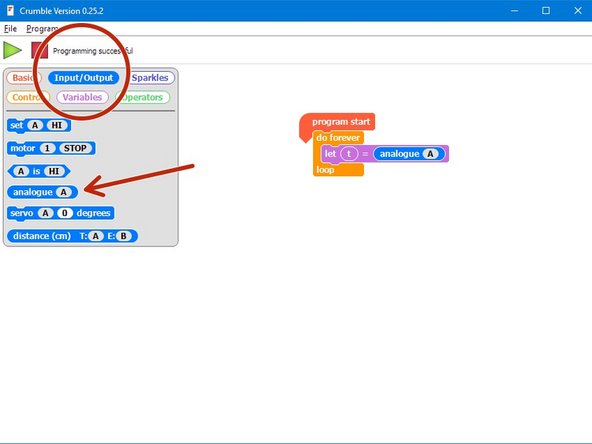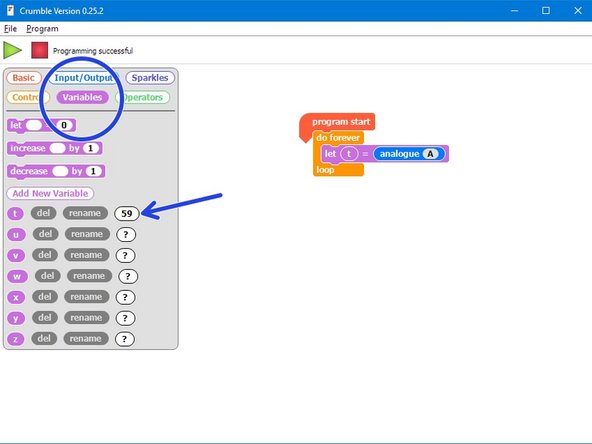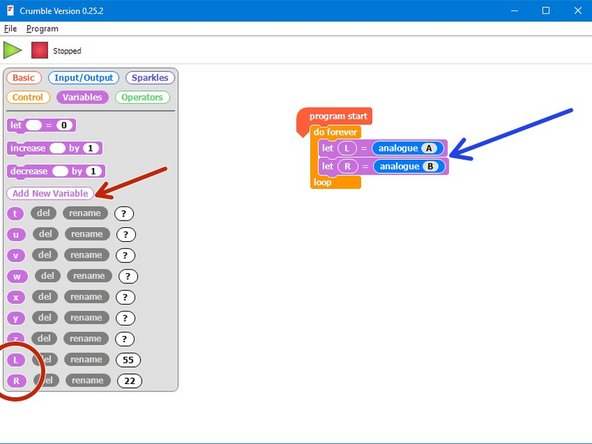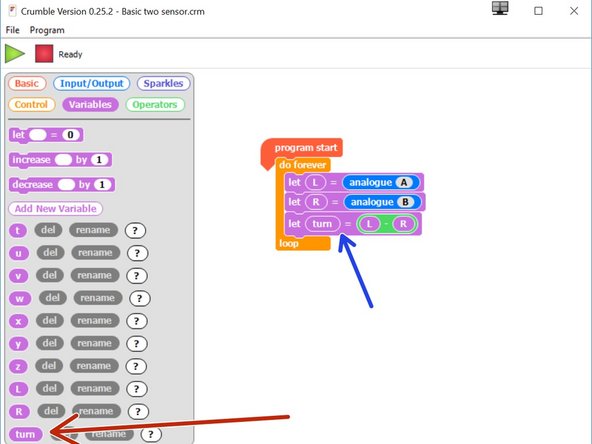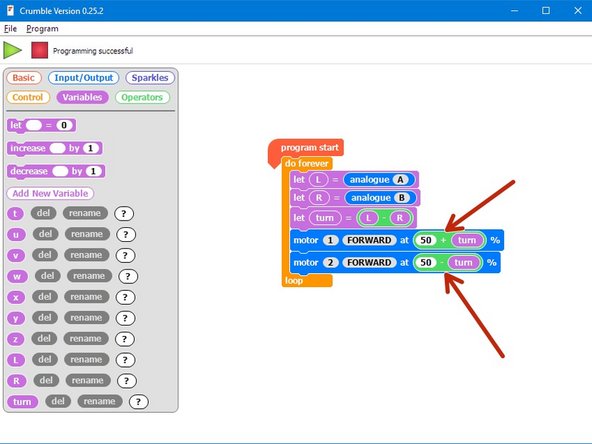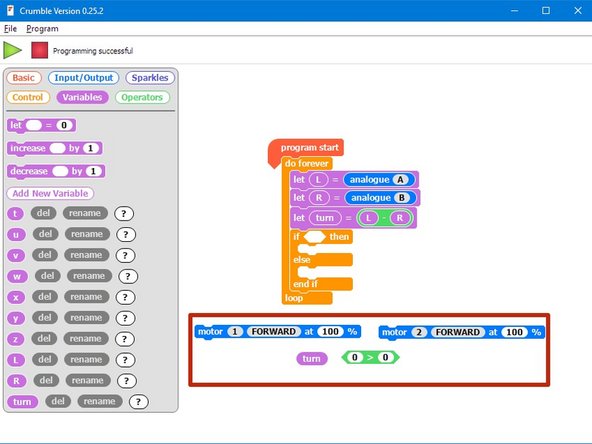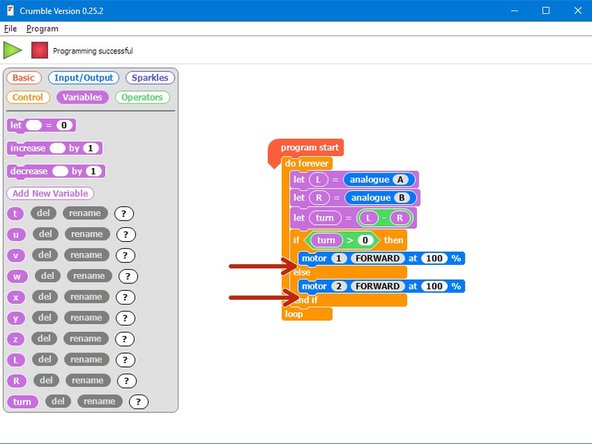Introduction
Learn about analogue inputs to make an even more sophisticated line following robot, that will smoothly follow any path.
-
-
We just need the line sensor for now - make sure your robot is setup like the picture.
-
-
-
To make a smoother, better line follower, we need to use the line sensor in analogue mode.
-
So far, we have been using it as a digital sensor - it can only be ON or OFF (HI or LO).
-
Analogue inputs (and outputs) can have any value - think about the difference between a digital and an analogue clock
-
A digital clock must display a whole number of minutes
-
But on an analogue clock, the minute hand can be anywhere - even halfway between two minutes!
-
-
-
Build the simple test program in the picture.
-
You can find the analogue block in the Input/Output menu
-
Program your robot, and keep it plugged in.
-
Try moving the robot slowly from one side of the line to the other, whilst watching the value of t in the variables menu.
-
See how it changes gradually as you approach the line?
-
-
-
We can use this gradual change to smoothly change the amount the robot turns as it get further from the line!
-
Add two new variables to the program called L and R (left and right).
-
Let L = the analogue value of the left sensor, and R = the analogue value of the right sensor.
-
Program the robot and try moving it slowly across the track again whilst still plugged in - make sure L and R behave how you expect them to!
-
-
-
The larger the difference between L and R, the further the robot is from the line so the more we need to turn.
-
For example, if both sensors are on the line, we don't need to turn at all and L and R will have the same value.
-
Add a new variable called turn.
-
After getting the values of L and R, set turn equal to the difference between L and R.
-
-
-
Program your robot and watch what happens to the value of turn as you move it across the line. It should be 0 when the robot is exactly on the line!
-
Let's use the turn variable to set the speeds of the motors.
-
Change the motor blocks so they use the turn variable to set the speed like the picture.
-
Test it out - this should follow the line really smoothly!
-
Do you understand how the code works? (hint: turn is positive when we need to turn right, and negative when we need to turn left)
-
If you robot can't do the really tight turns, try multiplying turn by 2!
-
-
-
You might have noticed that while the new program is smooth, it isn't as fast as the old two sensor digital program.
-
To make it faster, we need to make sure 1 wheel is always going 100% forwards, and then change the speed of the other wheel only based on how large turn is to follow the line.
-
So, if turn is positive, we should be turning right, so motor 1 should be at 100%
-
If turn is negative, we should be turning left so motor 2 should be at 100%
-
Add an IF/ELSE block to check if turn is positive or not, and set the correct motor to 100%.
-
-
-
Now its over to you!
-
Add two more motor blocks into the IF/ELSE block to set the other motor's speed using the turn variable, for turning left and right
-
Test the program really well - experiment with multiplying turn by different amounts to get a reliable line following program.
-
Here's a hint if you're confused - for the first part where motor 1 is at 100%, motor 2 should be set to forwards at a speed of 100 - turn.
-
-
-
If you're feeling really advanced, add the Sparkle module back in and set the colours of the LEDs proportionally based on how far away from the line the robot is!
-
Your robot can also get lost and now has no way of finding the line again - try and add the code you wrote previously back in so the robot can't get lost, or at least stops if it loses the line completely.
-




